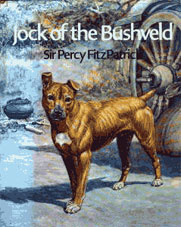Mpumalanga means ‘Place of the Rising Sun’ and is the name given to the new Province in Eastern Transvaal in 1993. It includes part of the old Transvaal and the former homeland KaNgwane, as well as parts of Gazankulu and Lebowa. The Province forms a very important part of South Africa’s Heritage. There are many game reserves including the world famous Kruger National Park. The natural heritage also includes: Bourke Luck Potholes and the Sudwala Caves. The Cultural Heritage includes: San rock paintings, Ndebele wall paintings, and the old mining town, Pilgrim’s Rest.
Capital: Nelspruit
Main languages: English, siSwati, isiZulu, Afrikaans to mention a few. (There are 11 Official languages. They include: Sepedi, Sesotho, Setswana, siSwati, Tshivenda, Xitsonga, Afrikaans, English, isiNdebele, isiXhosa and isiZulu )
Premier: David Mabuza
First premier (1994): Matthews Phosa
Mpumalanga's claim to fame:
Alluvial gold (Pilgrim's Rest)
In 1873, Alec ‘Wheelbarrow’ Patterson discovered alluvial gold near what is today Pilgrim’s Rest. At first he tried to keep it a secret, but then a similar discovery was made by William Trafford. This led to the world’s biggest gold rush of the time. But in 1886 reef gold was discovered on the Witwatersrand, which caused an even bigger rush. Many people left Pilgrim’s Rest and went to the Witwatersrand, but mining in the eastern Transvaal still continued until 1972.
Jock of the Bushveld
 Jock of the Bushveld
Jock of the Bushveld
Percy Fitzpatrick’s famous book, Jock of the Bushveld, is the true story of Fitzpatrick’s Staffordshire Bullterrier and their adventures in the South African lowveld. Fitzpatrick was a transport rider, which is somebody who carried goods between the harbours on the coast and the towns, especially mining towns, in the interior of the country. They provided a very needed service before railways were built, and even afterwards, as the trains were very slow. They used ox-wagons to transport food, clothes, tools and other goods. When all Fitzpatrick’s oxen died after they were bitten by tsetse flies, his business was ruined. He had to find a new job in Johannesburg, which meant that he had to give Jock away. One night, Jock’s new owner thought he was a stray dog that was stealing his fowl. He shot Jock dead.
Fitzpatrick wrote Jock’s story in a book, Jock of the Bushveld, which was published in 1907. Today it is still as popular as it was then and more than one movie has been made of the story. There are also many monuments for Jock in Mpumalanga, including one in the Kruger National Park.
Kruger National Park
The Kruger National Park is the oldest game park in South Africa. It was named after the ZAR President Paul Kruger, who wanted to create a game reserve between the Sabie and Crocodile Rivers in 1898. At first it was called the Sabie Game Reserve, but in 1926 the name was changed to the Kruger National Park. The Park is very large – it is even bigger than Swaziland! There are more than 500 types of birds and more than 130 types of mammals, including the Big Five: leopard, lion, rhinoceros, elephant and buffalo.
The Park plays a very important role in protecting our natural heritage, and tourists from all over the world are attracted by the wildlife in the Park. There are also a number of cultural heritage sites in the Park. Go to the Kruger Park’s official website: http://www.krugerpark.co.za
Mentioned in the first paragraph is the meaning of the name. This is explained in more detail: "A megalithic constructions is an erection of a very large, usually rough stone used in prehistoric cultures. These were also stones that lined up with the equinoxes and solstices. Three stones, aligned with the sunrise. These Monuments or building blocks date back to the Neolithic or late Stone Age and Chalcolithic or Copper Age (4500–1500 BC). The megalithic structures of Malta are believed to be the oldest in Europe. Perhaps the most famous megalithic structure is: "Stonehenge", in England. However a megalithic Site has been discovered in, Mpumalanga, South Africa. The site was known by locals as “Inzalo y’Langa” translating to: "The Birthplace of The Sun”. This has been used for sound healing. Adam’s Calendar, though controversial and may cause some people to get upset and argue, has been suggested to be the oldest man-made structure in the World. It is sometimes referred to as: " The African Stonehenge".
It is believed to predate both Europe's Stonehenge and the Great Pyramids of Egypt, by tens of thousands of Years. Its age has been estimated by some Historians, to be more than 75,000 Years old. It is believed to have been built aligning the 'Orion's Belt'. The site is possibly the only example of a completely functional, and mostly intact megalithic stone calendar in the World. The stones are all dolomite, weighing up to 5 tons each!"